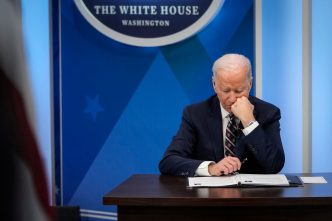Recent efforts by Australia, Britain and the United States to harmonise their defence trade controls are welcome, if long overdue. But there are reasons to worry that AUKUS Pillar 2 may be carved out of …
AUKUS Pillar 2 has a PR problem—and no, not just among sceptical regional partners. Compared with evident progress on Australia’s future submarine capabilities under Pillar 1, analysts have often decried a lack of detail or …
We’re at an important inflection point on the AUKUS timeline. Now that a roadmap for Australia’s acquisition of nuclear-powered submarines is in place under the banner of AUKUS Pillar 1, all three members are turning …
Washington was the last of the Quad capitals that Richard Marles visited in his opening diplomatic salvo as Australia’s deputy prime minister and defence minister. But, as far as defence matters are concerned, the agenda …
As the United States slides deeper into a proxy war with Russia, Indo-Pacific countries are increasingly concerned about the long-term implications of the Ukraine crisis for America’s power and position in this part of the …
Last Friday, Japanese Prime Minister Yoshihide Suga announced that he wouldn’t be contesting the ruling Liberal Democratic Party’s presidential election at the end of September. In doing so, he effectively signalled his intention to resign …
Many in the Australian strategic community were pleased to see the commitments in the government’s defence strategic update to improve the country’s defence industrial capabilities and stockpiles of strategic goods. The accompanying force structure plan …








